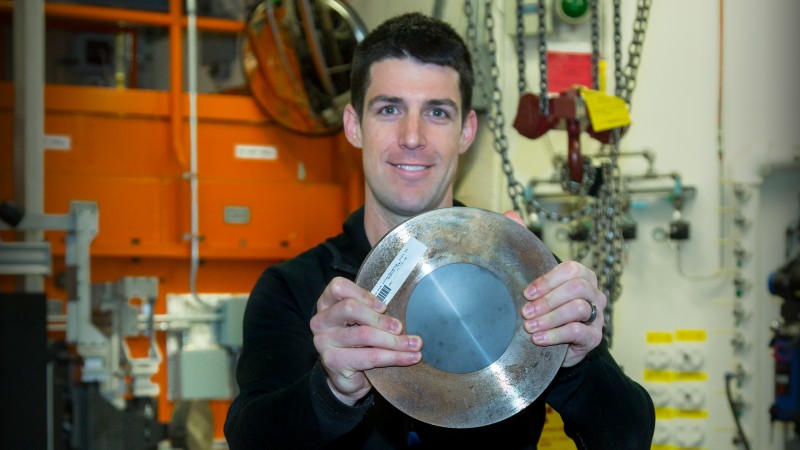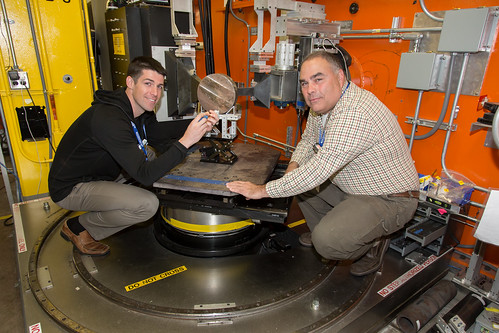The U.S. Army Research Lab and Australian Defence Science and Technology Group are collaborating to study ceramic materials for potential use in the design of military vehicle armor using neutrons at Oak Ridge National Laboratory’s High Flux Isotope Reactor.
Shannon Ryan from the Australian DST Group and Mike Zellner, Shane Bartus, Brian Levy and Patrick Swoboda from ARL are investigating the impact of applied stress on ceramic samples to correlate with ballistic performance for vehicular armor by using the Second Generation Neutron Residual Stress Facility, NRSF2, HFIR beam line HB-2B. The lightweight ceramic material could be used as vehicle armor in place of heavy metal solutions that traditionally protect the military’s vehicles. The research team is seeking to understand how pre-applied stress impacts the material’s ballistic performance to validate models and predictive tools.
To apply the right amount of stress in the ceramic, the users confined the ceramic samples with a steel ring and measured the strain distributed through the ceramic target using HB-2B’s neutron mapping technology.
For these users, neutrons are an advantageous method to non-destructively measure strain distribution on the ceramic, Ryan explained. Neutrons retain sufficient energy to penetrate the surface of dense materials like ceramics, thus providing strain measurements along the surface and within the ceramic armor parts under examination.
“I don’t know how else you could get a better measurement for this kind of sample, without corrupting it, other than to use neutrons,” he said. “It is only neutrons that have the ability to ‘see’ through a material that you couldn’t do so with another technique.”
In the next phase of this research, the users will run a series of ballistics tests on the compressed ceramic material to determine if the applied stress results in an improved performance.
This research was a collaboration between the U.S. Army Research Laboratory and Australian Defence Science and Technology Group.
HFIR is a Department of Energy Office of Science User Facility. UT-Battelle manages ORNL for the DOE’s Office of Science. The Office of Science is the single largest supporter of basic research in the physical sciences in the United States, and is working to address some of the most pressing challenges of our time. For more information, please visit http://science.energy.gov/. —Heidi Hill






